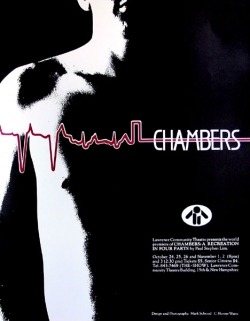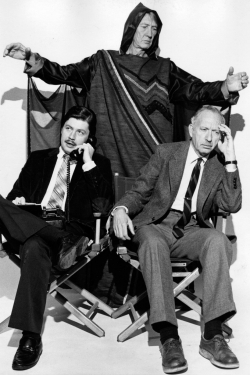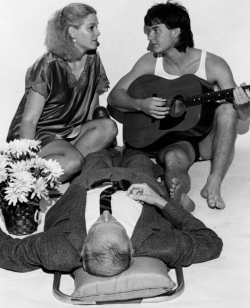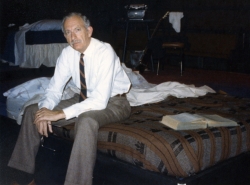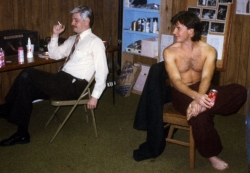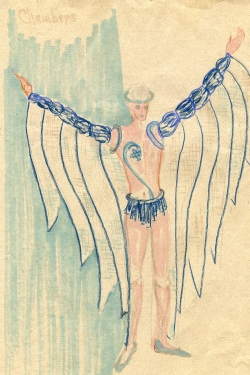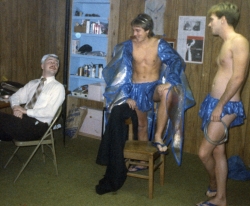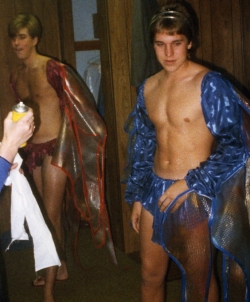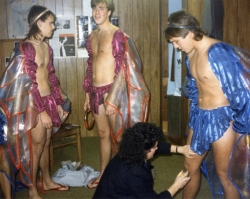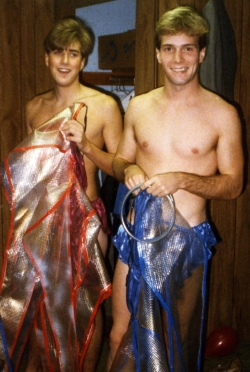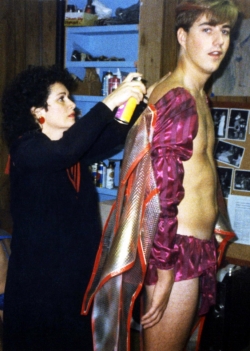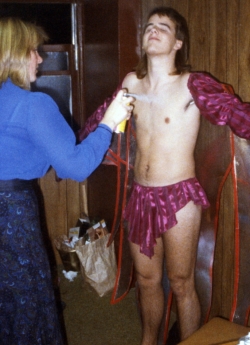Chambers: A Recreation in Four Parts
Images from the Show
Overview
Requirements: 2F, 3M, and 4 Ushers (preferably M)
Setting: Four bedrooms in the ancestral home of a Kansas City playwright. The pattern of exits and entrances from each chamber to the next should follow the way blood enters the human heart and the way it exits out of the human heart to the rest of the body.
Plot: An elderly and ailing Kansas City playwright has returned to his ancestral home and, with the help of the man who directed all of his earlier plays on Broadway, he is now staging scenes from his latest play, a work-in-progress which will be completed in the course of the evening’s presentation in front of a small invited audience. The man’s play is autobiographical in nature, giving us his own personal history–from the peculiar circumstances of his birth, to his seduction as a young man by his mother’s sister, to his unhappy marriage with a younger woman who is now cheating on him with one of his students, and finally to a scene which has yet to be written, even as it is being played out in real time.
Theme: The conceit of the play is that each man in the course of a lifetime has room in his heart for only four major heartaches; also, that we tend to play out the same script many times in the course of our lives, but with different actors.
Notes: On another level, the plot and narrative is a retelling of the Arthurian legend.
History: In order of composition, Chambers was the second play that I wrote, but it was produced out of sequence because Broadway producer Richard Barr optioned the play for nearly two years for a New York production, and then dropped the option. The full story behind this will appear in a forthcoming book about Richard Barr by David Crespy. Chambers was given a staged reading in 1979 by Midwest Playwrights Laboratory in Madison, Wisconsin, under the supervision of Dale Wasserman. And I subsequently directed a full production for the Lawrence Community Theatre in 1985. The third scene in the play is called “Password” and can be performed independently. In 1975, it was awarded second-prize in the one-act play competition of the Palanca Memorial Awards for Literature in the Philippines.
Availability: From the author.


